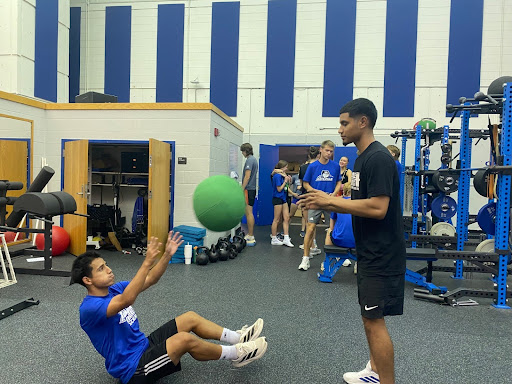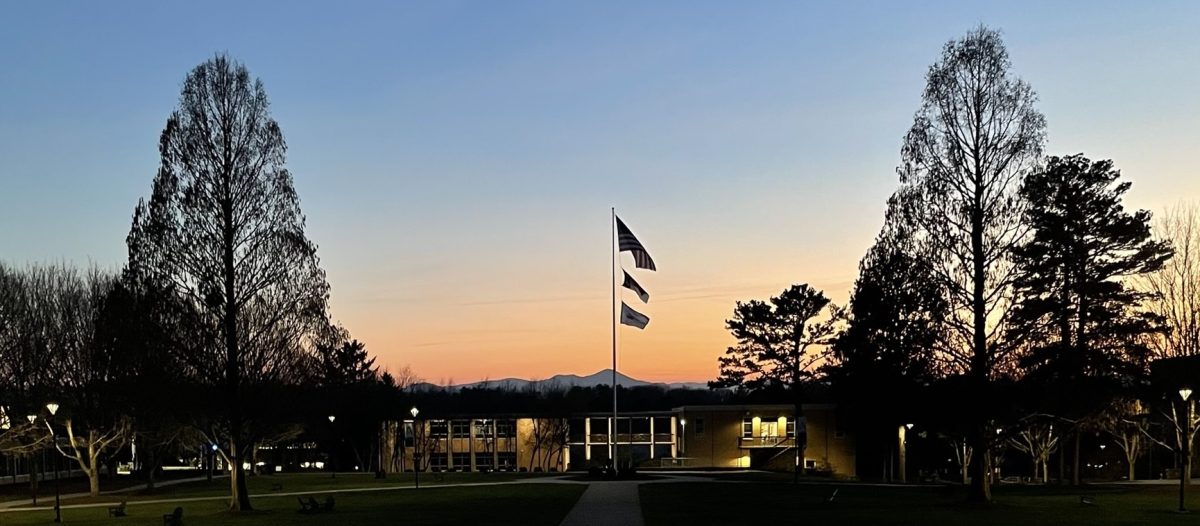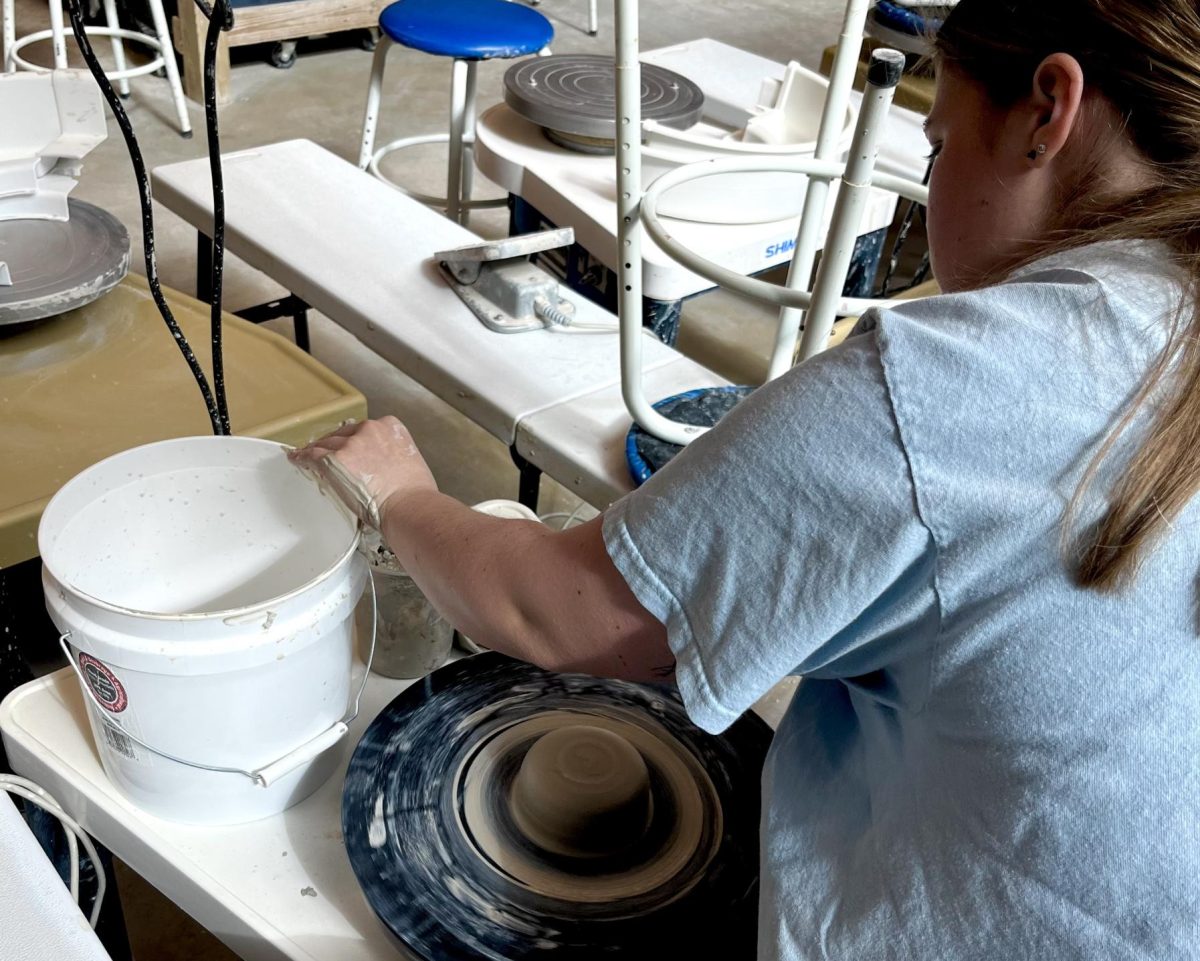With the vernal equinox behind us and the freezing weather that previously decimated campus gone, students aren’t letting the influx of sunlight go unnoticed.
“I think the light is wonderful. I think the weather is wonderful. It brings joy to my life,” said Gabby Nolan, a UNCA student flying a kite on the quad.
Temperatures this January dipped as low as 12 degrees Fahrenheit at times and hovered around 20-30 degrees, too. According to Weatherspark, temperatures this spring are expected to be around the mid-to-low 60s in Asheville. While the equinox is still on the horizon, the students enjoy the sneak peeks given on campus.
“I haven’t (gone kiting) in many years,” Nolan said before the kite in question was soon soaring above campus.
Students are flocking to the quad in droves, whether to play soccer or frisbee or just sit around and enjoy the sunlight.
“I love feeling the warm sun on my toes and putting my feet in the grass,” Stell Crooker, UNCA sophomore, said. “I feel good. I’m with friends in the sunlight, and I get dopamine from it.”
Though it’s hard to find a student on the quad who wasn’t enjoying the weather, not only the students’ moods are improving. Their attendance and productivity in class are, too.
“I think I’m more motivated in general. I was doing work today, which is crazy,” Nolan said, who relinquished control of her kite to another student.
The students on the quad hit a consensus: when the sun is up, so is productivity and mood.
“I do have depression all the time, kind of, but it definitely is more severe when it is dark outside, cold outside, shorter days. I definitely notice a huge change when I can get outside and enjoy life and nature,” Taylor Butler, a UNCA sophomore studying chemistry, said.
Some may feel it’s common sense that good weather leads to a good mood, but the science behind it is far more intricate.
“People are stimulated by the light and want to go out. Temperature plays a role as well– we just tend to be more active, you know, when the temperature is in a certain kind of nice comfort zone as opposed to when it’s really low or really hot,” UNCA Psychology Chair and Environmental Psychologist Mark Harvey said. “Factors like humidity can play a big role. We seem to detect it when it’s cool and also humid, it’s like there’s an extra bite to the air. It’s like your body can sense that.”
Harvey said there is no homeostatic adjustment, which is the body’s homeostasis in effect – the process that the human body uses to maintain its constant internal temperature.
“You have those thermoreceptors in the skin and they tend to be concentrated in the face, hands and the feet. When you go out and it’s cold, your body immediately detects that and works to bring the core temperature up,” Harvey said. “So, you start shivering a little bit, and that’s just unpleasant.”
Though this year’s winter was particularly biting, the freezing cold is not the only extreme temperature that has an adverse effect on our bodies. Both can harm us physically and mentally.
“Conversely when it’s really warm and humid, you step outside and your skin detects that temperature differential and elicits a train of activity,” Harvey said.” It’s gonna end up with an immediate sweating and a feeling of discomfort to some degree.”
Spring, the vernal equinox, is right in the middle of the two extremes, making the weather perfect for mood and body.
“When the weather first gets nice in the spring, it’s like there’s no kind of bodily reaction whatsoever. It’s like the inside. Temperature, humidity, and lighting levels are totally maintained as you go outside,” Harvey said. “There’s no painful alteration whatsoever. It’s just inviting.”
Students are springing into action on the quad as the weather warms, but the small area of the quad, in tandem with the influx of students, is leading to more interactions between students, also improving mood.
“College students have to focus their attention a lot and that’s very effortful. The brain consumes a disproportionate amount of the body’s metabolic resources, and it just needs a rest,” Harvey said. “Going outside and just hanging out and having some easy conversations with fellow students. It’s restorative.”
The Attention Restoration Theory states that the human brain has a limited capacity to focus on things, and this capacity can be restored and improved by spending time outside.
“That kind of effortless attention sort of rests and resets the mind, and they’ve actually collected data showing that people can improve performance on cognitive tasks when they take a break and are exposed to just the easy natural outdoor elements,” Harvey said.
Though many students are participating in outdoor activities due to the weather, many more are doing so because they see their friends doing the same.
“I think there’s a very strong social factor. If you have a friend who has a really broad latitude of what is considered comfortable weather and you like that person, you too are going to be influenced to have a broad latitude of what comfortable weather is,” Harvey said.
This sense of community is no doubt notable to any student who spends a few hours on the quad during the day.
“I think it’s really beautiful,” Isiah Paguagah, a student playing hacky sack on the quad, said. “I can just walk outside and like, I have something to smile about, because the wind is nice, and the sky is beautiful. It’s nice. It’s just beautiful.”


![Brooke Pedersen [second from the right] and Luis Reyes [right] hold banners during the Wrap The Woods event.](https://thebluebanner.net/wp-content/uploads/2025/09/ELIZABETH_PRITCHITT_IMG_3470-1200x804.jpg)
















